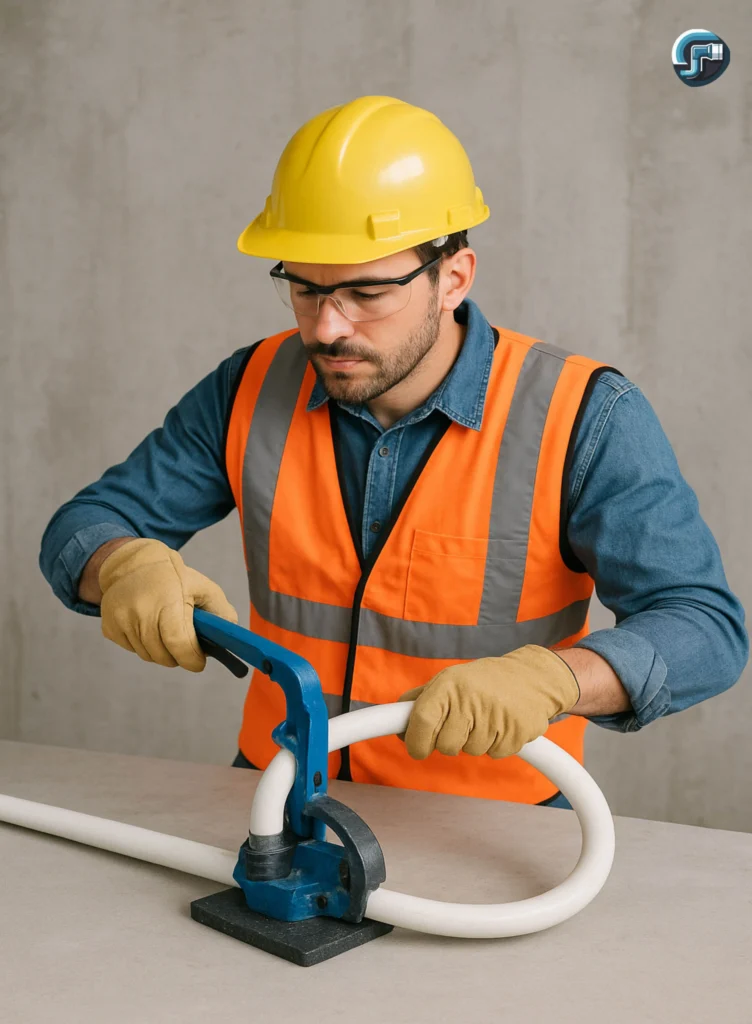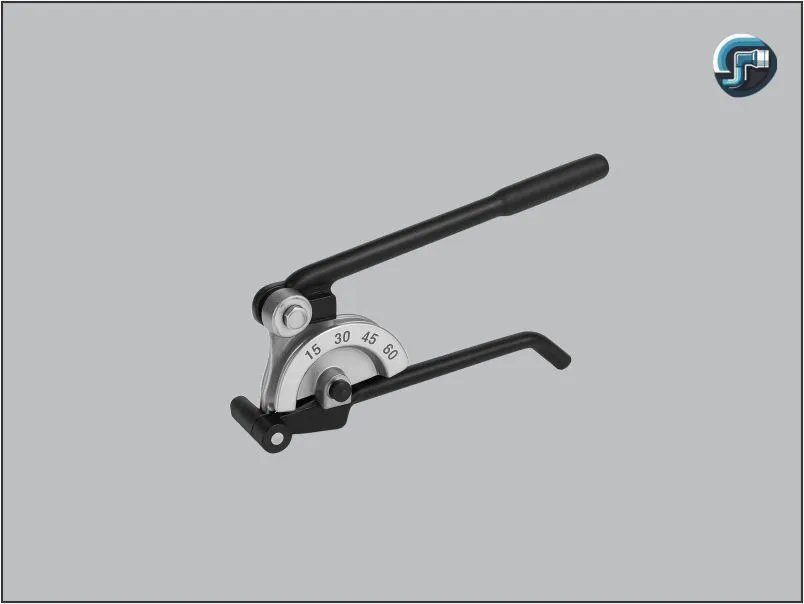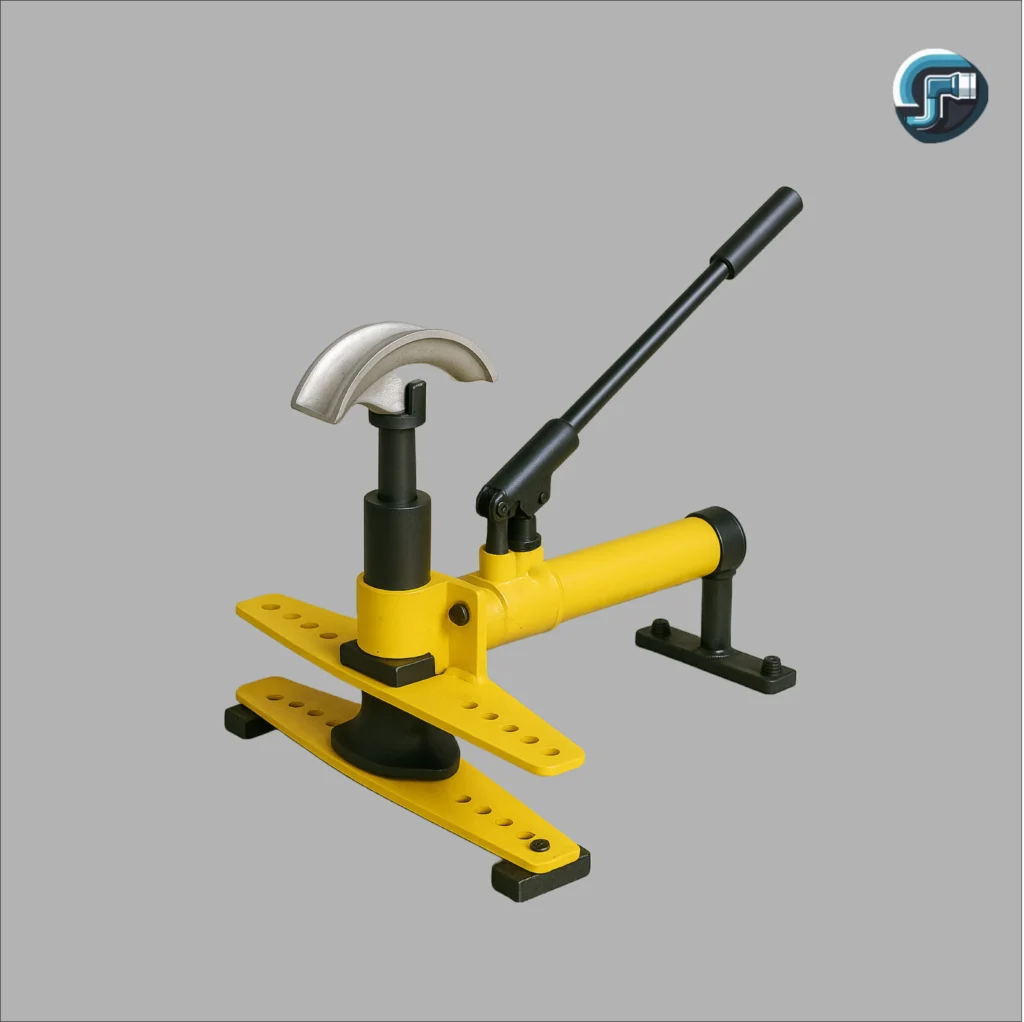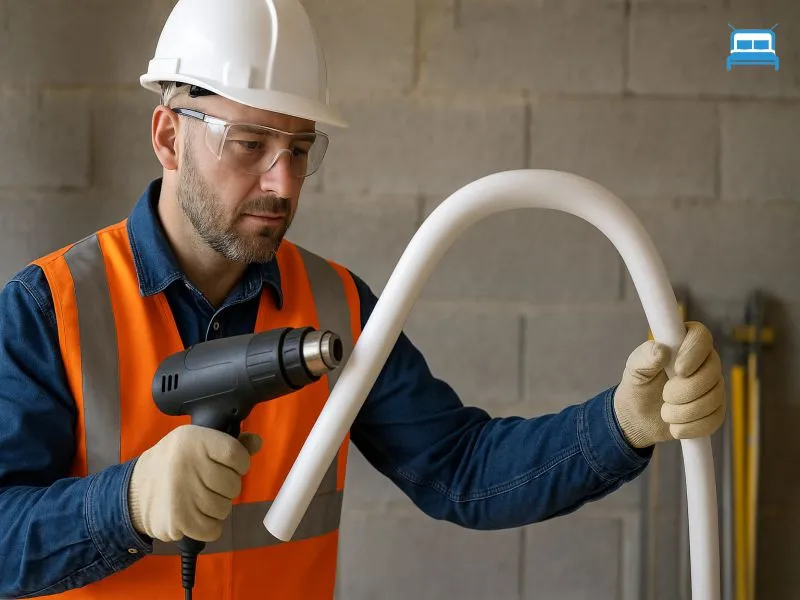PVC Pipe Bend
Custom angles and curves are often required for pipes, wiring, or even creative DIY projects with PVC tubing. However, bending PVC incorrectly without the proper tools will result in kinks, cracks, or worse. And here’s where a PVC pipe bender comes in-to make those smooth, even bends without shredding the pipe.
The guide will give you all regarding these useful tools. We’ll begin with the definition of a PVC pipe bender and the several types available. We’ll also get into the benefits associated with using one-and offer an in-depth step-by-step tutorial on how to bend each piece of PVC pipe properly and effectively to make it always look great and built to last.

What Is a PVC Pipe Bender?
A PVC pipe bender is a very special tool used for applying heat and pressure on a PVC pipe section to make it pliable enough to be bent into different angles or curves. Unlike using a heat gun and bending the pipe by hand, a pipe bending tool produces a controllable and repeatable outcome. This generally includes a heating element and a forming guide or die set to support the pipe during the bending process.
A proper pipe bending tool will prevent flat spots (kinking) and wall thinning in the pipe, both of which can weaken the pipe and create future problems. If you are a professional plumber, an electrician running conduit, or a hobbyist building a custom frame, then this tool is for you. Every time it is going to give you a clean, reliable bend.
Reasons to Use a Dedicated Pipe Bender
You could bend your pipe with a heat gun, but a dedicated pipe bending tool has distinct advantages in bending PVC Pipe, if you are serious about achieving the quality you want.
Uniformity and Precision
A pipe bender allows for heated material to be wrapped around a form, giving you uniformly heated material, and supported to achieve smooth curves perfectly matched to the angle you are trying to recreate, precision that would be difficult to achieve by hand.
Structural Integrity
By preventing kinks and ensuring an even wall thickness, a bender maintains the pipe’s strength. This is critical for applications where the pipe will be under pressure or structural stress.
Safety
Designed to handle high temperatures safely, benders reduce the risk of burns and give you better control over the hot, flexible pipe.
Efficiency
For projects requiring multiple identical bends, a Manual pipe bender saves time and effort. It streamlines your workflow and reduces material waste from failed attempts at bending pvc pipe.
Types of Pipe Benders for PVC
When you’re looking for a pipe bender, you’ll find several types, each suited for different materials and tasks. While some are made for metal, many are designed specifically for plastics like PVC. The main categories are manual and hydraulic benders.
Manual Pipe Bender
A manual PVC pipe bender is a handy tool used to shape PVC pipes without fittings or joints. It works by applying controlled pressure and heat, allowing the pipe to bend smoothly at the desired angle. Ideal for plumbing, electrical conduit work, and DIY projects, a manual PVC pipe bender helps achieve precise curves while maintaining the pipe’s structural integrity. Unlike powered benders, it requires physical effort but offers excellent control and portability. Using a manual bender minimises pipe cracking, reduces material waste, and provides professional-quality results for both home improvement and industrial applications. Here are a few common variations:

Heating Blankets and Boxes
Heating Blankets: These flexible, silicone warm wraps with integrated heating elements wrap around the pipe section to be bent, and transfer heat evenly back to the pipe, causing the PVC to become soft and flexible. When finished warming the requested pipe area, the pipe can be bent by hand or with a forming die. Heating blankets travel importantly well among different pipe diameters and can be a true PVC pipe bend.
Heater Boxes: A heater box provides a contained unit wherein you can better insert a specific pipe section. The heater box warms the pipe section uniformly with convection or infrared elements. Heater boxes are ideal for a workshop setting where you may be performing multiple bend type pipes of the same type.
Heat Guns with Bending Springs
This hands-on method involves using a standard heat gun to soften the PVC while a bending spring is inserted into the pipe. The spring, a tightly coiled piece of metal, prevents the pipe walls from collapsing inward as you bend it. While cost-effective, this technique requires more skill to achieve smooth, even bends.
Hydraulic Pipe Bender
A Hydraulic pipe bender is a heavy-duty tool that is used to bend thick metal pipes and conduits. The Hydraulic pipe bender has a hydraulic ram that allows it to press the pipe against forming dies to make the bend with enormous force. This tool is usually overkill for most PVC pipe work, it is important to mention it. Bending a PVC pipe in a hydraulic pipe bender without the proper heat could shatter the material right away. Several industrial situations have hydraulic systems in conjunction with large-scale heating elements to bend large diameter PVC or thermoplastic pipes. For most contractors or DIYers, it is a better option to use a manual heating bender instead.

PVC Bendit
PVC Bendit is a professional heating tool that is ideally suited to soften and make bends in PVC pipes. It is not only the safe way but also the quickest way to do so, since it does not cause kinks or deformations during the process. Its use has extended to several professions like plumbing, electrical installations, and fabricating, which they need to make smooth, custom bends in PVC conduit or pipe then using standard fittings. The PVC Bendit is characterized by its flexible heating component which is inserted into the PVC pipe. When it is switched on, the heat produced by the element gets evenly distributed inside the pipe making the PVC soft enough to be molded. As soon as the pipe is made flexible, it can be forced into the desired contour.
The PVC pipe cools down after bending and keeps the new curve forever without losing any of its strength or structural integrity. Because of the precise or continuous bends required in applications such as custom irrigation layouts, greenhouse frames, furniture making, and art installations, this tool has become notably indispensable in such scenarios. In comparison with traditional bending methods like hot sand or heat guns, the PVC Bendit is easier to use and makes the process more controlled, safe, and less material-wastage-prone. Eventually, it becomes an invaluable tool for an individual dealing with PVC pipe regularly as it gives professional quality bends, time savings, and no material waste.
How to Bend PVC Pipe: A Step-by-Step Guide
Now that you are familiar with the tools, you likely want to know how to bend pvc pipe using a heating blanket bender. This method offers a great balance of control and ease of use.
Step 1: Set Up Your Workspace and Prepare Your Materials
Make Safety a Priority: Ensure that your workspace has enough ventilation to minimise inhalation of fumes. Be sure to wear gloves and glasses which can create heat work surfaces.
Prepare Your Materials: A PVC bender (heated blanket), your PVC pipe, measuring tape, marking pen and safety gear.
Measure and Mark: Locate where you want your bend to be on the pipe, and mark it. There are no hard and fast rules, but measuring that distance you will heat, is a good habit. For example, if heating an 8 inch pipe for a 90 bend, a good starting point, is to heat an 8 inch length of pipe.
Step 2: Heat the Pipe
Wrap the Pipe: With the blanket, wrap the pipe around and snug against the marked area. Wrap snug enough to have the blanket touching pipe for a consistent heating surface.
Heat: Make sure the heating blanket is plugged in and turned on. The time it takes to heat the pipe will depend on the diameter, wall thickness of the pipe and the heating blanket’s rating (lag). Refer to the manufacturer’s specifications to seek advice. Your goal is to ultimately soften the material enough to create a bendable PVC pipe.
Step 3: Create the Bend
Bend Gradually: After the pipe has sufficiently heated, switch-off and take off the heating blanket. Immediately start creating the bend. Gradually and smoothly, bend the pipe to the desired angle. Using a form such as a round object or bending die, while creating a bend will aid that a smooth radius is produced without kinks.
Don’t Kink: If the pipe starts to flatten or crease, you may be bending too quickly or it may not be hot enough, or some other reason. You could also put a bending spring into the pipe for support.
Step 4: Cool & Set Bend
Holding Position: After you have formed your desired bend in the pipe, you will continue to hold it there until it starts to cool down. Once it begins to cool, the pipe should hold the bend.
Cooling off: Allow the pipe to cool down naturally in the air. If you prefer, you could speed up the cooling off process using a wet towel or sponge. Just be careful to add cool water gradually; adding cool water rapidly may cause thermal stress on the material. Inspect the Bend: After the pipe has cooled and set, check your work. A good bend will be uniform, flat, inexperienced of kinks, decolorization, or thinning.
Other Ways to Bend PVC Pipe
FAQ’s
Mastering the Art of Bending PVC
A good pipe bender is more than convenience — it may be an all-star, game-changing move for many projects. Providing controlled, even heat, piping benders will allow you to bend PVC piping to create custom, smooth curves without compromising structural integrity. Whether you decide to use a heating blanket or heater box, the correct technique must be mastered.
By following all the steps described above — preparing correctly, heating correctly, bending evenly, and cooling thoroughly — you will be prepared to tackle any project that involves bending PVC pipe. With a superior pipe bender and good technique, your craftsmanship will improve, and you will save time while constructing a more durable project.

